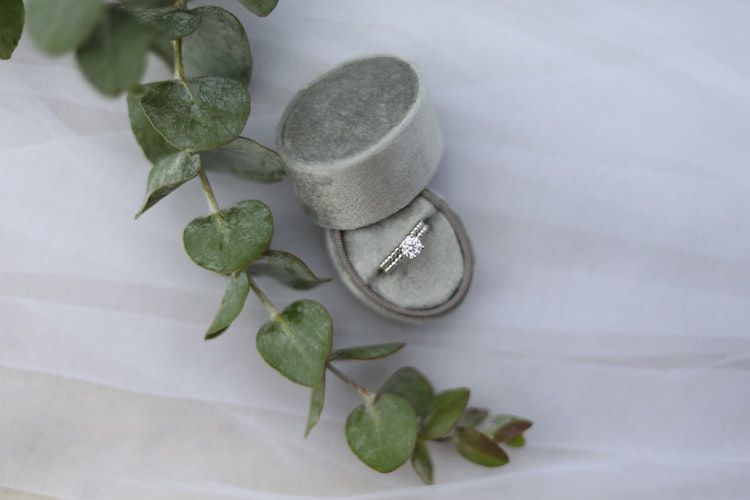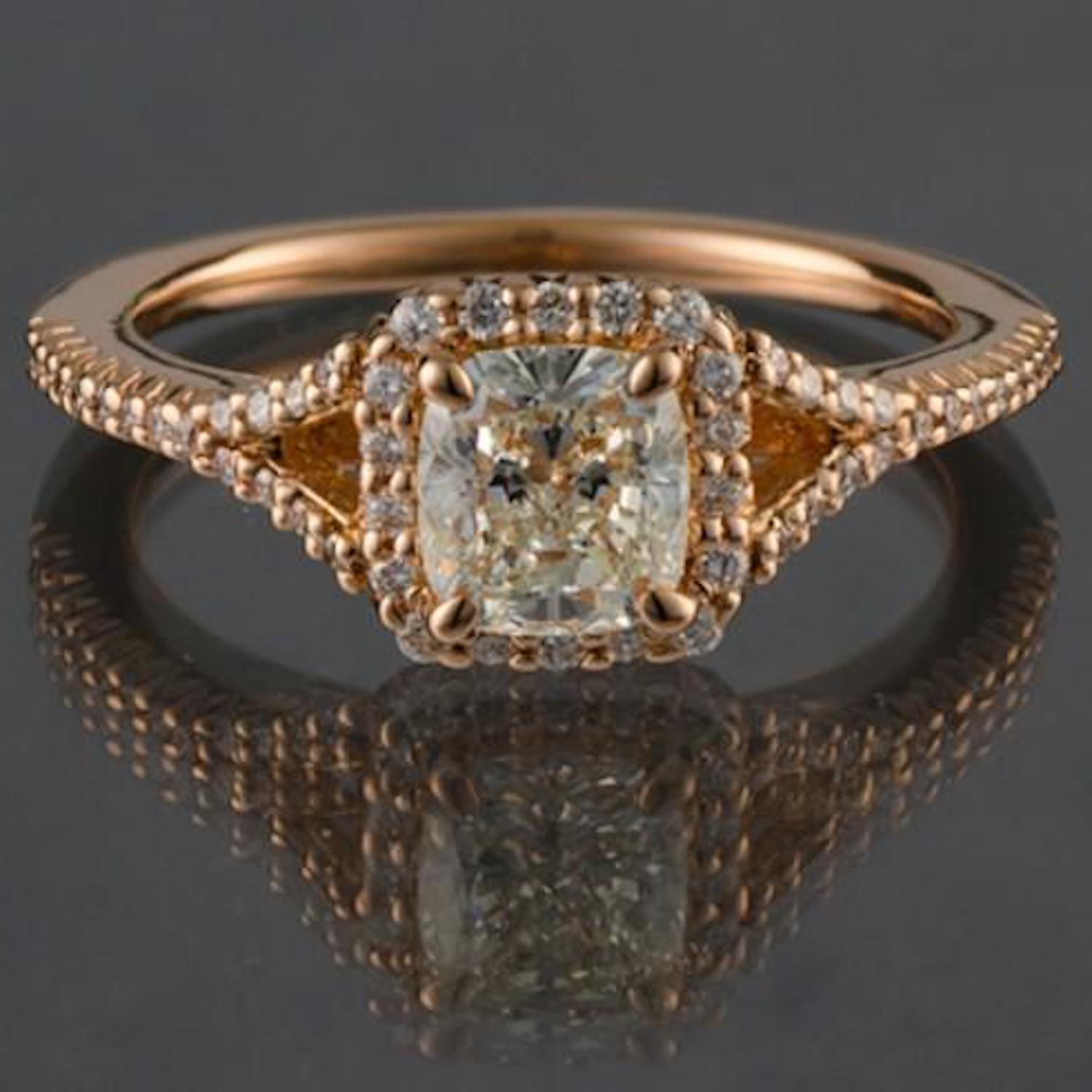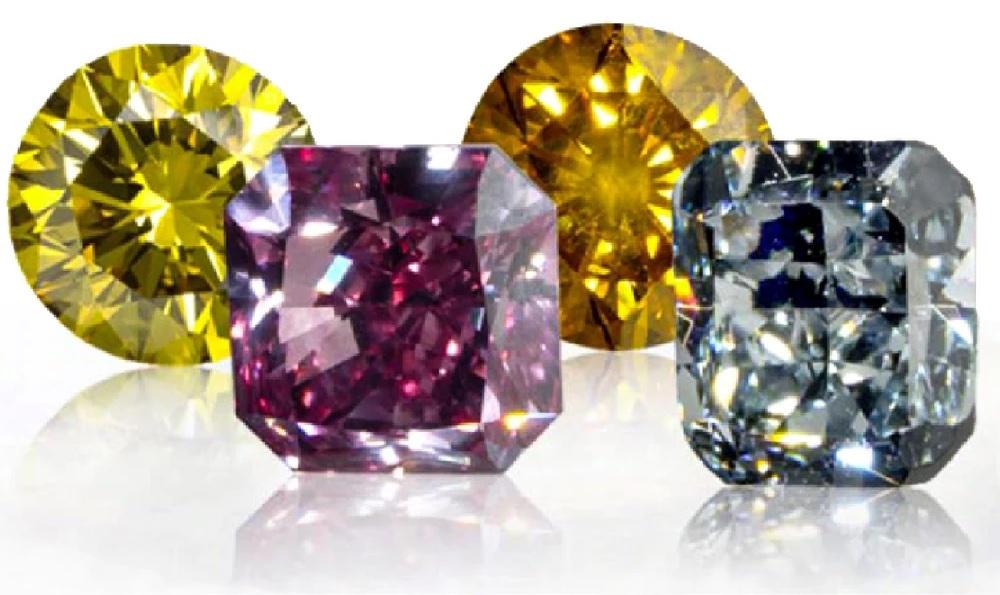Moissanite vs Diamond

Are you looking for an engagement ring? It's wise to browse all of your gemstone options before making a final decision. While diamonds are the most popular choice for engagement rings, some prefer the fire and brilliance of moissanite.
WHAT IS MOISSANITE?
Moissanite is a diamond simulant made of silicon carbide. A diamond simulant is a stone that has a similar appearance to a diamond but is not a real diamond. It is very difficult to tell apart a diamond & moissanite, making moissanite a common diamond alternative. It's one of the most common gemstones for engagement rings after diamonds.

Moissanite was originally discovered in a meteor crater in 1893 by scientist Henri Moissan. He mistakenly believed the crystals he found were diamonds. Naturally-occurring moissanite is extremely rare. Because of this, most of the moissanite on the market is lab-grown. It can take 2-3 months to create a single moissanite stone in a lab.
DOES MOISSANITE LOSE ITS SPARKLE?
Moissanite is a superior gemstone that will always stay bright and beautiful. Unlike other forms of diamond, moissanite never loses its sparkle or brilliance over time due to its hardness and refractive index that tests the best among all diamonds on the market!
A moissanite stone has an extremely hard surface with outstanding reflective properties, making it able to withstand heavy wear without losing their luster for years upon end, unlike less attractive simulants like cubic zirconia (CZ). This makes moissanite a great cheaper alternative for your engagement ring.
IS A FOREVER BRILLIANT MOISSANITE THE SAME AS A FOREVER ONE?
Have you been browsing around looking for information on what "Forever Brilliant Moissanite" is? That's Charles & Colvard's first attempt at a colorless gemstone. Because of the technical limitations when it was originally produced, it had slight hints of greenish-blue from within, which many found undesirable.
Forever Brilliant moissanite was discontinued once Forever One moissanite was created in 2015. Forever One moissanite is brighter and whiter, and is available colorless or near-colorless. Its clarity is equivalent to internally flawless - VS1 diamonds, and have an excellent cut.
CAN YOU TELL THE DIFFERENCE BETWEEN MOISSANITE AND DIAMOND?
See if you can tell which engagement ring has a moissanite center stone and which engagement ring has a diamond center stone.
 |  |
The ring on the left is moissanite and the ring on the right is a diamond!
Most people cannot tell the difference between moissanite and diamonds. The GIA has even stated that moissanite is “much closer to diamond in overall appearance and heft than any previous diamond imitation.”
One way to tell apart moissanite from diamond is to examine the stone’s brilliance and fire. Moissanite has more fire and brilliance than diamond – it isn’t as noticeable in smaller stones, but in stones over 5mm, it’s much more noticeable. Moissanite is known for its “disco-ball” effect because rainbow light quickly flashes around the gem. However, looking at a stone’s fire and brilliance isn’t always a reliable way to differentiate the two because an expertly cut diamond will also have lots of fire and brilliance.
MOISSANITE VS DIAMOND
While moissanite has a very similar appearance to diamonds, they have many key differences. Moissanite weighs much less than diamonds – 15% lighter, to be exact. Because of this, moissanite is usually sold by length and width in millimeters rather than carat weight. A moissanite stone that is visually equivalent in size to a 1-carat diamond will not actually weigh 1 carat. Moissanite is also sold based on different standards than diamonds. Moissanite is sold based on size and color (colorless or near-colorless) while diamonds are priced based on their 4 Cs as well as many other factors.
Diamonds are slightly harder than moissanite. Moissanite ranks 9.25 on the Mohs scale, while diamonds rank 10 on the Mohs scale.
While diamonds are slightly harder, moissanite has more fire and brilliance. Moissanite has a refractive index of 2.65-2.69, while diamonds have a refractive index of 2.42. The refractive index is the stone’s ability to bend light. Moissanite’s fire is rated at 0.104, while the fire of a diamond is rated at 0.044, meaning moissanite will give off more rainbow flashes of light.
Moissanite is much less expensive than diamonds. Moissanite can be about $400 to $600 per carat while a one-carat diamond can be anywhere between $2,000 to $20,000.
module
OTHER AFFORDABLE DIAMOND ALTERNATIVES
Colored gemstones, such as sapphires, rubies, and emeralds make for a unique engagement ring and can cost less than diamond engagement rings.
Lab-grown diamonds, which are chemically, physically, and optically identical to earth-grown diamonds, are another affordable option. They can cost 30-50% less than natural diamonds and are growing in popularity for engagement rings. You can learn more about lab-grown diamonds here.
Cubic zirconia is another common diamond alternative and looks exactly like a diamond with a fraction of the price tag.
So, which is better: moissanite or diamond?
It’s all about preference! Choose whichever stone feels right for you. Some people find the “disco-ball” effect that moissanite creates to be too much for them, while some people love the fire and price point of moissanite. Others love the romantic, classic appeal of diamonds and prefer the added assurance of hardness.
Lab Grown Diamond vs Moissanite
Composition: Moissanite is silicon carbide, while lab diamonds are pure carbon, both created in controlled lab environments.
Optical Properties: Moissanite has a higher refractive index, leading to more pronounced fire and brilliance. Lab diamonds share the same sparkle and subtlety as natural diamonds.
Hardness: Diamonds top the Mohs scale at 10; moissanite is close behind at 9.25, ensuring durability for both.
Price: Moissanite typically offers more affordability, whereas lab diamonds are a cost-effective alternative to natural diamonds.
Eco-Friendly: Both are considered more sustainable than mined diamonds, with lab diamonds emphasizing ethical sourcing.
Resale Value: Lab diamonds may retain higher resale value due to their identical nature to mined diamonds; moissanite's value is appreciated for its visual qualities rather than its resale potential.
If you prefer the price point of moissanite but still want a diamond, there are lots of “hacks” to make your diamond less expensive. Contact customer service at 1-888-9RITANI, and we can help you find a beautiful diamond within your price range. Financing is also available.
Does moissanite test as a real diamond?
There are diamond testers that rely on thermal conductivity and electrical conductivity. Because diamonds and moissanite conduct heat in a similar manner, it is possible for moissanite to read as a diamond on a diamond tester that relies on thermal conductivity. A diamond tester that tests stones on electrical conductivity shouldn’t confuse diamonds and moissanite because they conduct electricity differently.
RELATED: Do Lab-Created Diamonds Test As Real?
Is moissanite a precious stone?
Moissanite stones are not considered precious. The only precious stones are diamonds, rubies, sapphires, and emeralds. There is no scientific reason why some stones are considered precious and others are semiprecious; it is just a categorization.
Does moissanite get cloudy?
Like diamonds, a moissanite stone will not get cloudy over time.


